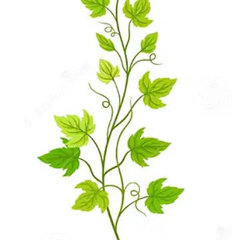-
Content count
3,039 -
Joined
-
Last visited
-
Days Won
5
Everything posted by Bindi
-
It depends on your definition of the spiritual self vs my definition of the spiritual self. To me the spiritual self is a spirit body imbued with its own higher consciousness (which I term shiva and Shakti, established respectively in the head and the heart), which can exist and move independently of the material form. Once this spiritual self has been developed there is no transcending it, it is the culmination of the path within the material world. It acts in alignment with ‘the Dao’ but that’s the end point. The Self, as it operates here, is at best clothed in higher consciousness.
-
Perhaps the truest definition might be the Self is what is left when we die? It is very hidden here on earth. Perhaps here we are the Self plus our dual nature. Even if we can establish a higher consciousness (Shiva and Shakti) beyond karma, higher consciousness still remains the cloak that the Self wears and acts through.
-
I have come to believe that: Deluded thoughts (stories, egoic reactions, false identities) are created to avoid fully feeling the karmic wound. Karma = frozen emotion, a psychic imprint from a previous experience — often traumatic, unbearable, or overwhelming — that couldn’t be integrated at the time. These wounds become energetic knots in the subtle body, and they block the descent or activation of Shiva/higher consciousness. Declaring everything “maya” (illusion) is an intellectual or metaphysical strategy to avoid feeling pain. What we really protect isn’t ego, per se — it’s the core wound underneath the ego — and that wound is karmic. Therefore, the path to awakening is not about denying karma (by calling it illusion), but going toward it, feeling it, and integrating it. 1. Karma as Frozen Emotion When a trauma or shock is too intense to process, it gets stored: As a mental pattern (vasana), An emotional freeze (samskara), Or a somatic knot (granthi). That unprocessed experience literally anchors us in time — we carry a loop of the past inside our subtle field, and until we feel it fully, it dictates our thoughts, reactions, and spiritual limits. This is not maya — this is a real energetic structure within our being. To call it 'illusion' before it’s healed is not insight — it’s avoidance masquerading as wisdom. 2. The Role of Deluded Thoughts (Stories) is Protective These thoughts are not random — they are psychic armor. They function to: Avoid re-experiencing the karmic pain. Maintain a sense of control. Protect the ego from collapse. Keep the karmic wound buried. The stories aren't the root problem — they are the defense against the real problem. And the real problem is: “I cannot feel this pain and survive.” 3. Bypassing Karma = Blocking Transformation In Advaita or Buddhist logic, there’s often a push to invalidate the personal story as quickly as possible by labeling it “maya.” But without first healing what fuels that story, this can: Reinforce repression. Cause disembodiment. Create “false awakening.” Leave the karmic field unchanged. So — karma must be healed, not dismissed. 4. Healing Karma is What Allows Shiva/Higher consciousness to Take Root This unhealed karmic wound prevents Shiva/Higher consciousness from establishing itself. Shiva cannot settle in a body that is still controlled by old pain loops. He may visit, but he cannot inhabit. Because Shiva is not an escape. He is the container for total reality — which includes all pain, all history, all karma. He can only stay when: The body no longer flinches away from itself. The heart is willing to feel everything. The ego no longer needs to defend the wound. Then, and only then, can Shiva stay. Shiva/higher consciousness is an energetic reality, not just a concept. In Summary karma is the bottleneck, not maya. Karma blocks the flow; maya is the symptom. Calling the wound “not real” just to avoid pain is itself a deeper illusion. The path to integration is not abstraction — it’s direct feeling, honest contact, willingness to suffer consciously. When the original wound is felt, it is healed, and when it is healed Shiva takes his seat, actually. Higher consciousness is brought into the world. Then there’s no need to say “everything is maya” — because there’s no longer anything to defend.
-
It seems to me Nondualists want to dissolve their salt and have it too.
-
What part of the salt doll is personality?
-
I wouldn’t characterise alignment with the Dao as nonduality, as far as I can understand it alignment with the Dao is about making the spirit and the body one, divinising the human to reflect the Dao. The mundane ego “I” may be dissolved, but the ‘True yang’ or Yang Shen (or higher consciousness) replaces it. The outcome as I see it isn’t the erasure of individuality, but the embodiment of the Dao through a fully integrated human being.
-
I noticed yesterday that all old posts have disappeared, I had tried to find a quote from an old post of mine and only 3 pages of recent history existed. I checked another members history and found the same, I assumed it was to do with the daobum reset and that it was common knowledge as I don’t come on here very often.
-
I don’t know this experientially ant this point and I won’t believe it as an article of faith.
-
I’m interested in higher consciousness being established within, where the personal self is dissolved, and ordinary mind and form are transcended. I think this does completely change who you are.
-
Actually, I arrived here with an interest in some neidan images I had come across. Neidan is not nondualist, it’s a process that comprehends duality (yin/yang), stages of transformation, and embodiment. Remember the interests of the founder of this site? But having an interest in these things I’m now politely being shown the door? This board shouldn’t “represent non-dual views”, non-dual views are just the loudest voices. My beliefs are led only by my dreams and experience, and tend to align more with aspects of neidan and Sanatana dharma.
-
I had to look up Om Tat Sat, and came across Hari Om Tat Sat, which is what I’m getting at:
-
Would you equate ‘Spirit’ with the Shiva archetype within?
-
Feel free to share your thoughts on this here!
-
Gotama certainly thought karma was important to actually deal with. He said: Through many a birth I wandered in samsara, seeking but not finding the builder of this house. Painful is birth again and again. But now, O house-builder, you are seen! You shall build no house again. All your rafters are broken, your ridgepole shattered. My mind has reached the Unconditioned; I have attained the destruction of craving.” — Dhammapada 153–154 But his “Unconditioned” realisation left him with many conditioned beliefs such as: I don’t think it’s unreasonable that I think unconditioned should be genuinely unconditioned. Also I don’t see any reference to a higher consciousness that was installed. A Buddhist won’t see this as important perhaps, but it is something I’d look for in anyone who claims to be beyond karma.
-
To me a relationship holds the possibility of personal transformation. Some of the problems are mine, difficult to see and own but transformative if I manage to. Some of the problems are a partners problems, will he or she see and own them? That’s up to them. Like Nungali said, opposites attract, I think to give us a mirror that we can look into and with any luck start to see ourselves. The more opposite, the closer to reality.
-
How would anyone practically go about removing actual karma? Not conceptually, but energetically, directly. That seems like a good place to start.
-
Honestly, I’m just tired of hearing the same stock responses, especially from Buddhist and nondual traditions. It often feels like the same counterpoints get recycled no matter the context - they’re so familiar that they’ve started to feel more like auto-pilot than insight. I’m trying to speak from a different layer. I’m not interested in theories. I’m interested in what changes us for real — what breaks the loop, opens the heart, allows actual higher consciousness to actually inhabit the body. Karma needs to be healed in energetic reality — not understood and dismissed as part of a philosophical concept. Until it’s felt, integrated, and released at the level of the subtle body, I maintain it continues to shape our experience, no matter what view is espoused.
-
I’m not at all sure what first stage enlightenment is but I fully agree resolving personal karma is necessary for ‘spiritual’ progress. For me, the word forgiveness doesn’t quite capture the process. I don’t experience karma as something to forgive — I see it as a psychic wound, a frozen moment of overwhelming emotion that couldn’t be felt at the time it occurred. It’s not “wrong” — it’s unintegrated. So I see healing karma as less about moral reconciliation and more about fully feeling what was once unbearable. At this stage, I’m focused on personal karma. While I don’t outright discount broader layers like collective or even galactic karma, I feel like complicating our situation with those levels can distract from the immediate work of healing what’s right here, in our own subtle field. If the personal isn’t healed, we’re not in any position to honestly perceive or address anything larger anyway.
-
But how are perceptual veils actually removed while one is still caught in delusion? What is the ‘identity’ being dissolved, if not the structure protecting the karmic wound? And how does one align energy when their perception is still shaped by pain or fragmentation? It seems to me that these veils are often held in place by the very karmic pain we haven’t fully felt. So wouldn’t facing the wound be a necessary part of dissolving the veil?
-
I used maya as illusion based on this paragraph that was posted in a thread recently - I could have responded directly in that thread, but I’ve been thinking about the nature of karma a lot lately and I thought I’d start a thread focused on karma specifically. I agree with your perspective though, our perceptions are distorted, and even with the best intentions, we often don’t see things as they are - I’m thinking because we’ve learned to shy away from the rawness of reality.
-
Only when you recognise the ultimate game. Until then it’s shittola 🙂





